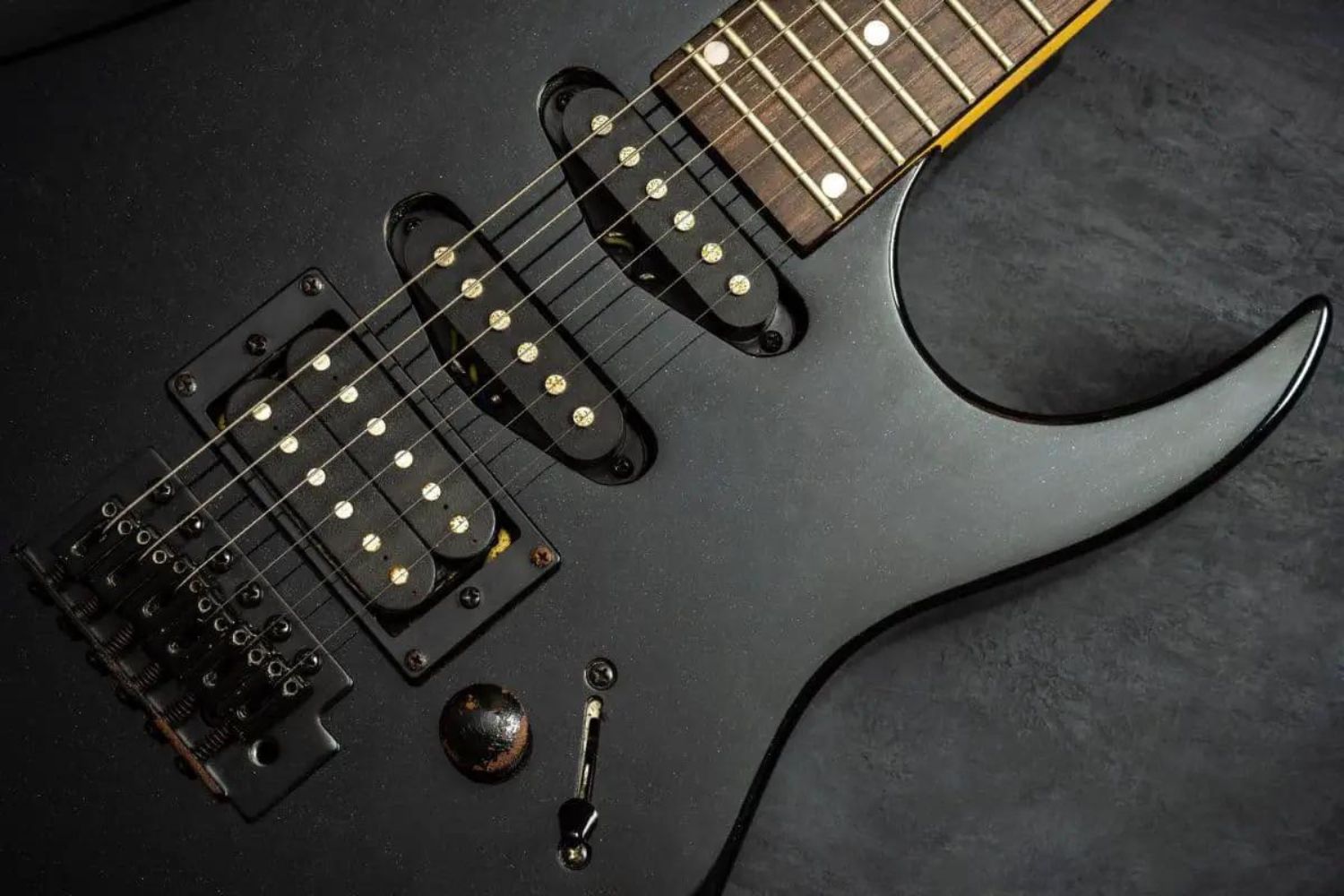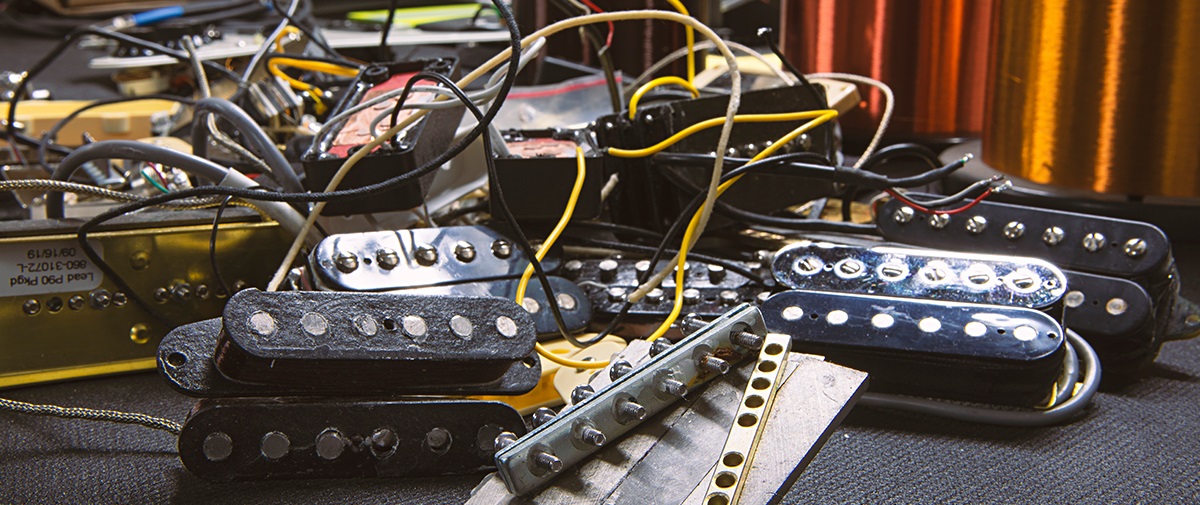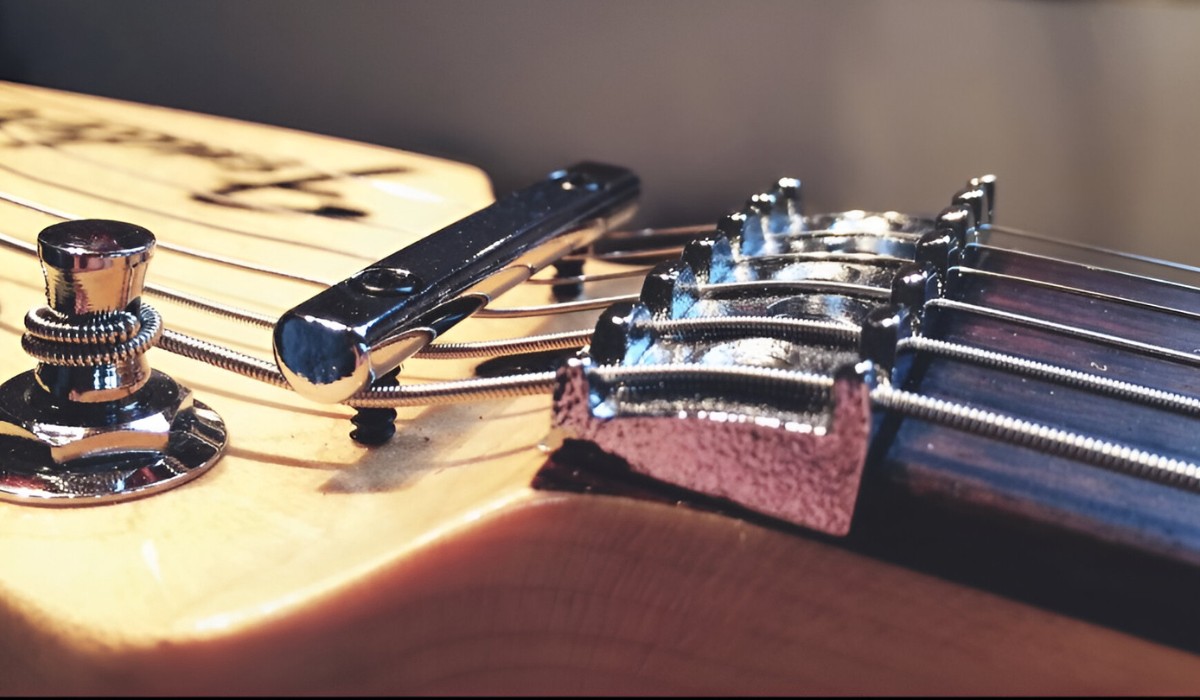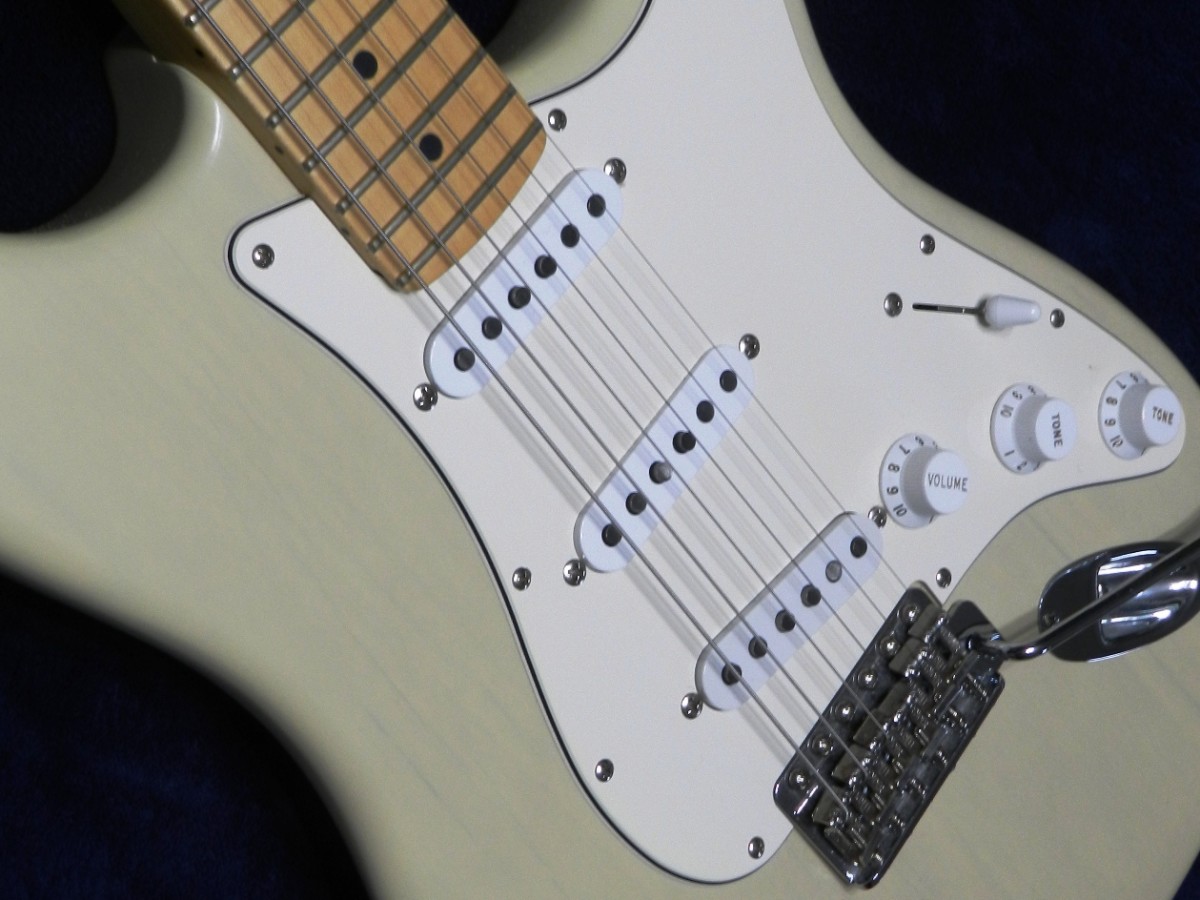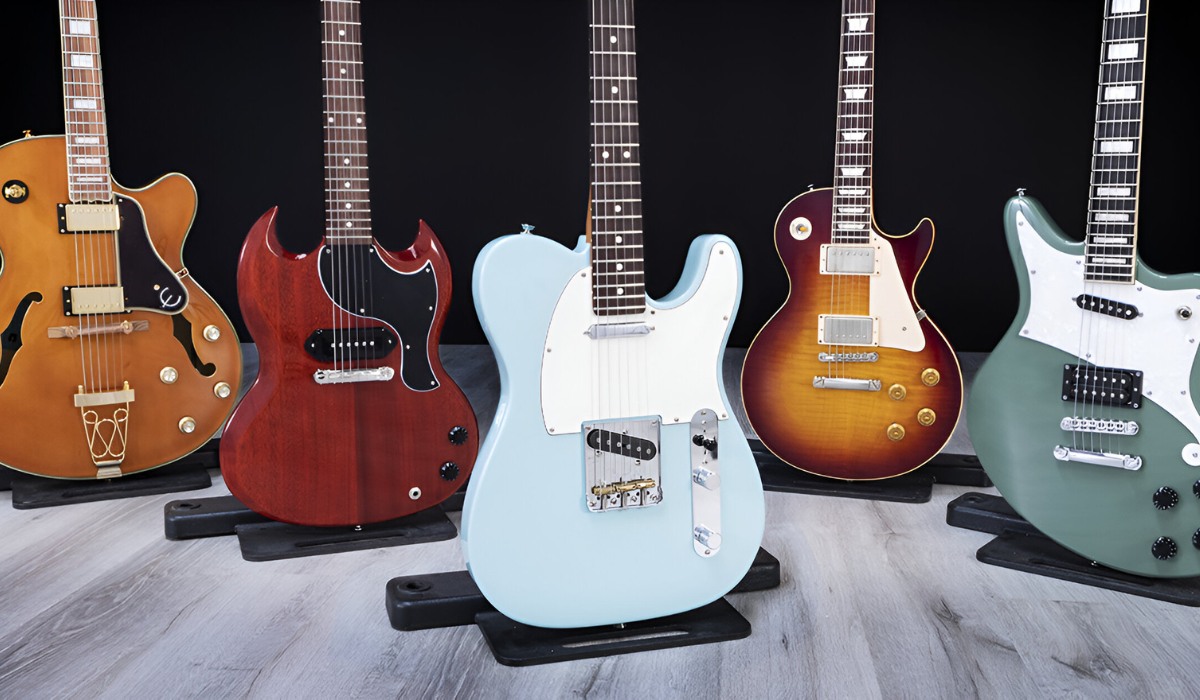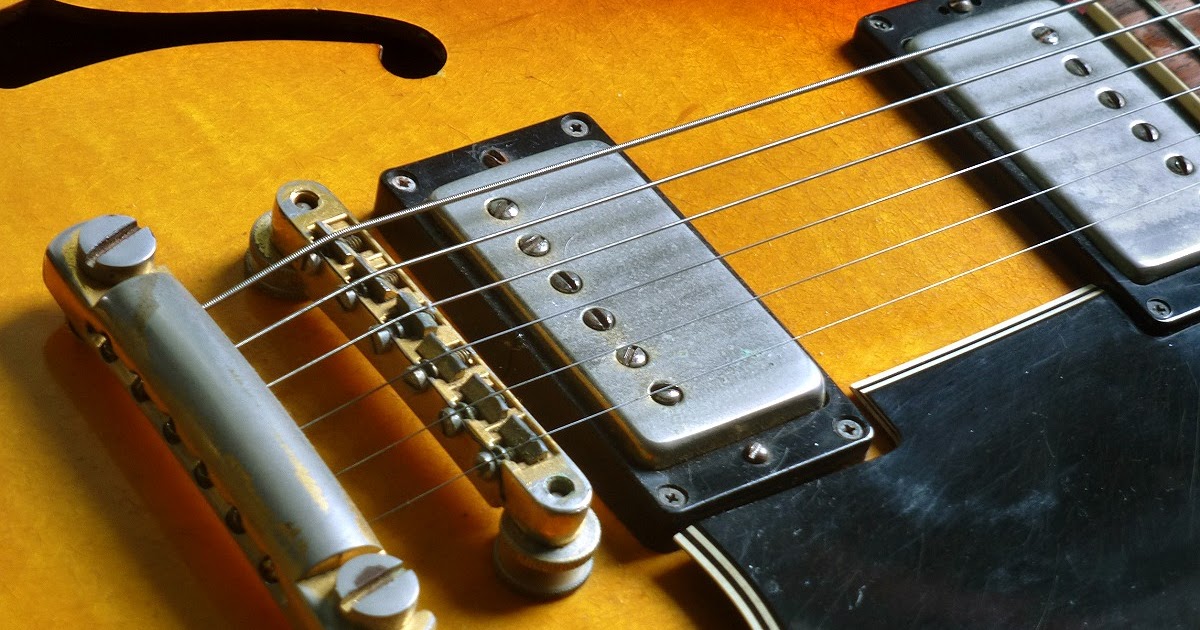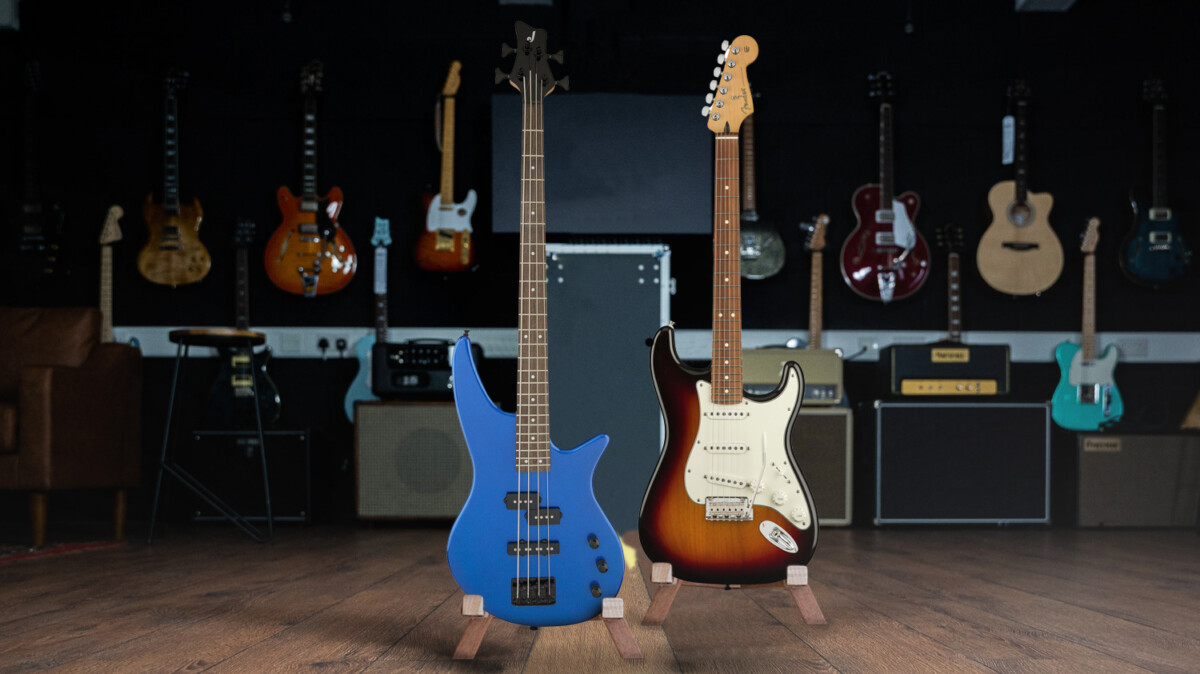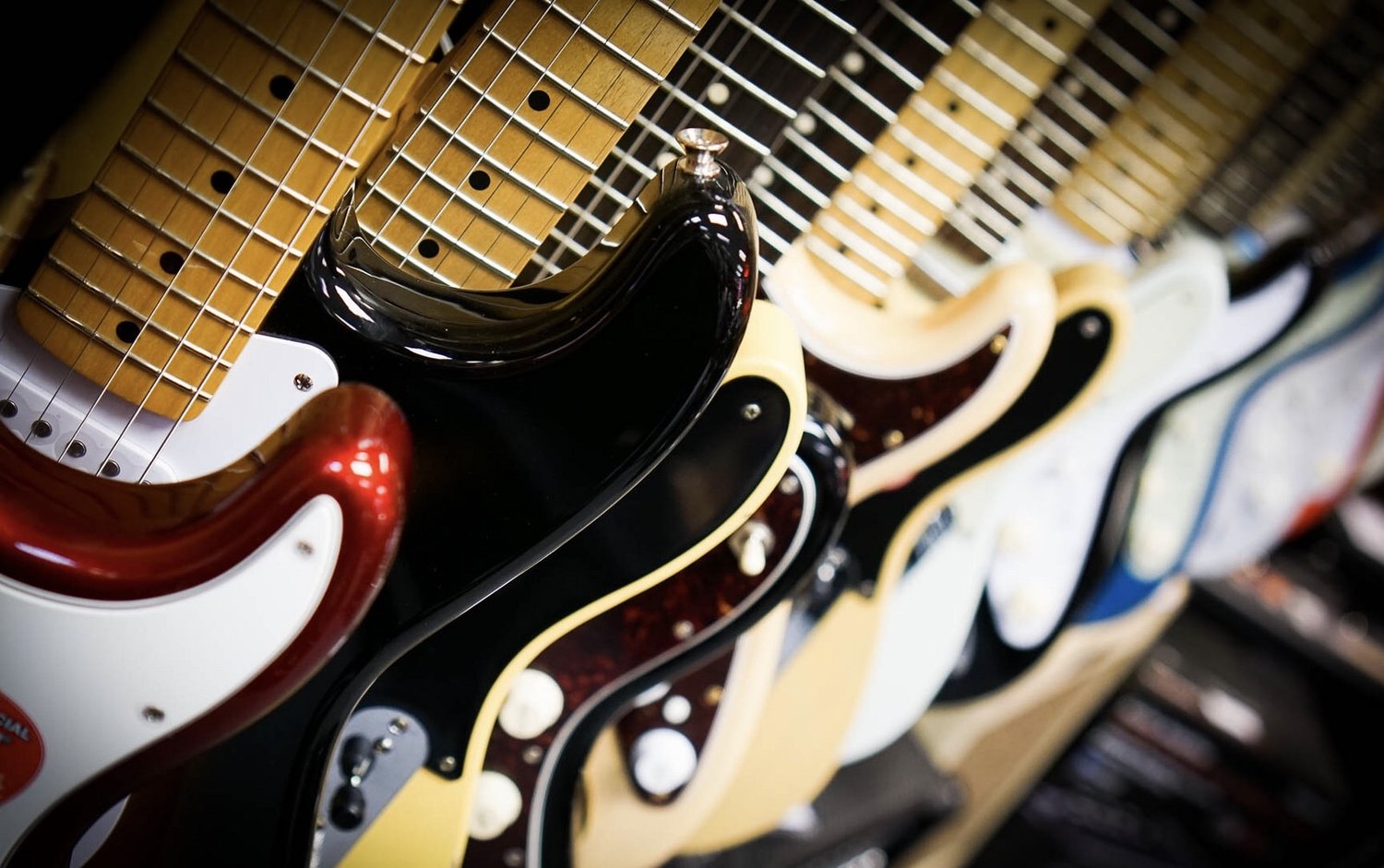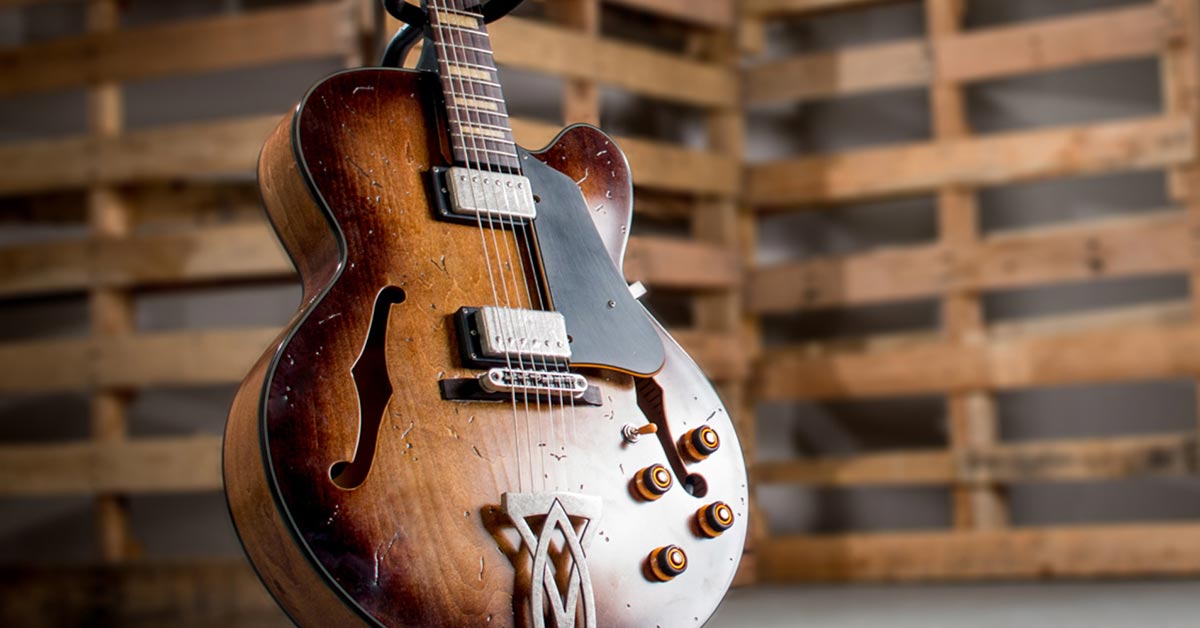Introduction
Are you ready to unleash the raw power and ferocious sound of metal music through your electric guitar? Whether you're a seasoned guitarist or just starting out, achieving that signature metal sound is a thrilling journey that requires the right equipment, techniques, and mindset. From selecting the perfect guitar to mastering the art of shredding, this guide will walk you through the essential steps to make your electric guitar sound truly metal.
Creating a metal sound on an electric guitar involves a combination of factors, including the instrument itself, the pickups, the amplifier, effects pedals, tone and EQ settings, and playing techniques. Each element plays a crucial role in shaping the aggressive, intense, and often thunderous sound that defines metal music. By understanding and mastering these components, you can elevate your guitar playing to new heights and unleash a sonic force that resonates with the spirit of metal.
In the following sections, we'll delve into the key aspects of achieving a metal sound on your electric guitar. From choosing the right guitar and pickups to optimizing your amp and effects, we'll explore the essential elements that contribute to crafting a powerful and unmistakably metal tone. Additionally, we'll cover playing techniques that are fundamental to creating the aggressive and dynamic sound that defines metal music. Whether you're drawn to the bone-crushing riffs of heavy metal or the lightning-fast solos of thrash metal, this guide will equip you with the knowledge and insights to harness the full potential of your electric guitar in the realm of metal music.
So, grab your axe, buckle up, and get ready to embark on a sonic adventure that will ignite your passion for metal music and empower you to wield the electrifying sound of the genre's most iconic guitarists. Let's dive into the world of metal guitar and unleash the untamed energy that resides within your instrument.
Choosing the Right Guitar
When it comes to crafting a powerful metal sound, selecting the right guitar is the foundational step that sets the tone for your sonic journey. The choice of guitar can significantly influence the overall sound, playability, and versatility, making it essential to pick an instrument that aligns with the aggressive and dynamic nature of metal music.
One of the most popular choices for metal guitarists is the solid-body electric guitar. Known for its robust construction and ability to handle high-gain tones, the solid-body design is well-suited for delivering the intense and aggressive sound that defines metal. Additionally, the choice between a fixed bridge and a tremolo system (commonly known as a whammy bar) can impact your playing style and the stability of tuning, especially during aggressive riffing and dive bombs.
Furthermore, the tonewood of the guitar plays a crucial role in shaping the overall sound. Tonewoods such as mahogany and basswood are favored for their ability to produce a resonant and heavy tone, making them popular choices for metal guitars. The neck construction and scale length also contribute to the feel and playability of the guitar, influencing factors such as string tension and fret access, which are vital for executing fast and precise movements during metal performances.
Another key consideration is the type of pickups installed on the guitar. High-output humbuckers are commonly preferred for metal due to their ability to deliver a thick and powerful sound while effectively reducing unwanted noise and interference. Additionally, the number of pickups and their configuration, such as H-H (dual humbuckers) or H-S-H (humbucker-single-humbucker), can offer a wide range of tonal options, allowing for versatility in crafting different metal sounds.
Ultimately, the choice of guitar is a deeply personal decision that should reflect your playing style, sonic preferences, and budget. Whether you opt for a classic metal guitar model or a modern, high-performance instrument, selecting a guitar that resonates with your musical identity is pivotal in laying the groundwork for achieving a formidable metal sound.
Selecting the Right Pickups
When it comes to shaping the sonic character of your electric guitar for metal music, the choice of pickups plays a pivotal role in defining the tonal palette and overall sound. Pickups are electromagnetic devices that capture the vibrations of the guitar strings and convert them into electrical signals, ultimately shaping the raw sound that is amplified and sculpted through your rig.
For metal guitarists, high-output pickups are often favored for their ability to deliver a thick, aggressive, and articulate tone that is well-suited for the genre’s intense playing style. High-output pickups are designed to produce a hotter signal, allowing for increased sustain, enhanced harmonic response, and a tighter low-end, all of which are essential for achieving the powerful and defined sound that is characteristic of metal music.
Humbucking pickups, known for their noise-cancelling properties and robust sound, are a popular choice among metal guitarists. These pickups feature two coils that work together to eliminate the hum and interference often associated with single-coil pickups, making them ideal for high-gain scenarios where clarity and punch are paramount. Additionally, the choice between passive and active pickups can significantly impact the overall sound and tonal versatility. Active pickups, powered by a preamp, offer a higher output and can provide a more focused and aggressive tone, making them well-suited for modern metal styles that demand extreme clarity and precision.
Furthermore, the pickup configuration on the guitar, whether it’s a single humbucker, dual humbuckers, or a combination of humbuckers and single coils, can offer a wide range of tonal options, allowing for versatility in crafting different metal sounds. The position of the pickups, such as bridge, neck, or middle placements, also influences the overall tonal characteristics, offering distinct sonic profiles that can be tailored to suit various playing styles and musical expressions.
Ultimately, the selection of pickups for your electric guitar is a highly personal and subjective decision that should align with your sonic preferences, playing style, and the specific nuances of the metal subgenre you aim to explore. By understanding the sonic attributes of different pickups and their impact on the overall sound, you can make an informed choice that empowers you to unleash a powerful and commanding metal tone through your electric guitar.
Using the Right Amp and Effects
Once you’ve selected the ideal guitar and pickups for your metal journey, the next crucial step is harnessing the power of the right amplifier and effects to shape your electric guitar’s sound into a ferocious sonic force that embodies the spirit of metal music.
When it comes to amplifiers, the choice between solid-state and tube amps can significantly influence the tonal characteristics and responsiveness of your guitar’s sound. Tube amps, known for their warm and dynamic tone, are favored for their ability to deliver rich harmonics and organic saturation, making them a popular choice among metal guitarists seeking a more traditional and dynamic sound. On the other hand, solid-state amps offer a more reliable and consistent performance, often with built-in effects and versatile tonal shaping capabilities that cater to the demands of modern metal styles.
Furthermore, the wattage and speaker configuration of the amplifier play a crucial role in determining the headroom, projection, and overall sonic impact. Higher wattage amps can deliver increased headroom and clean headspace, allowing for greater dynamic range and clarity, while lower wattage amps can achieve natural power amp saturation at lower volume levels, making them suitable for recording and smaller venues. Additionally, the choice of speakers, whether it’s a single speaker, multiple speakers, or different speaker sizes, can impart distinct tonal characteristics and frequency response, influencing the overall sonic footprint of your rig.
Effects pedals are integral to sculpting the signature sound of metal guitar. Distortion and overdrive pedals are essential for achieving the aggressive and saturated tones that define metal music. Whether you prefer the searing high-gain saturation of a distortion pedal or the dynamic response of an overdrive pedal, these effects serve as the foundation for shaping the raw power and intensity of your guitar’s sound.
Other effects such as delay, reverb, and modulation pedals can add depth, atmosphere, and texture to your sound, allowing for expressive and immersive sonic landscapes that elevate your playing to new heights. Additionally, noise gates are valuable tools for managing unwanted noise and maintaining a tight and focused sound, especially in high-gain scenarios where noise and feedback can be prevalent.
By carefully selecting and integrating the right amplifier and effects into your rig, you can unlock a vast sonic palette that empowers you to unleash the full potential of your electric guitar in the realm of metal music. Whether you’re aiming for bone-crushing rhythm tones, searing lead solos, or atmospheric textures, the right combination of amp and effects will serve as the catalyst for crafting a commanding and unmistakably metal sound.
Adjusting the Tone and EQ Settings
Mastering the art of tone shaping and EQ adjustments is essential for sculpting a powerful and commanding sound that resonates with the ferocity and intensity of metal music. By understanding the intricacies of tone controls and EQ settings, you can unleash the full sonic potential of your electric guitar and craft a tone that cuts through the mix with precision and impact.
One of the fundamental aspects of tone shaping is the use of the guitar’s onboard tone controls, typically in the form of tone knobs or switches. These controls allow you to adjust the overall tonal characteristics of your guitar, influencing factors such as brightness, warmth, and presence. Experimenting with the tone controls on your guitar enables you to tailor the sonic profile to suit different playing styles and musical passages, whether it’s dialing in a searing lead tone with enhanced treble or crafting a thick rhythm sound with added warmth and depth.
Equally important is the utilization of the amplifier’s EQ (equalization) controls, which typically include bass, midrange, and treble adjustments. Understanding how to manipulate these EQ settings empowers you to fine-tune the frequency response of your guitar’s sound, allowing for precise sculpting of the low, mid, and high-frequency bands. For metal guitar tones, a common approach involves boosting the lows for added weight and depth, dialing in a focused midrange for clarity and definition, and shaping the treble to achieve the desired level of aggression and articulation.
Additionally, the presence control on the amplifier can play a crucial role in shaping the overall projection and clarity of your guitar’s sound. Adjusting the presence control allows you to add sparkle and brilliance to your tone, enhancing the articulation and definition of your playing, especially during lead passages and high-gain scenarios.
Furthermore, the use of graphic or parametric EQ pedals can offer a more detailed and nuanced approach to sculpting your guitar’s sound, providing precise control over specific frequency bands and allowing for tailored adjustments to suit different playing environments and sonic requirements.
By honing your skills in adjusting tone and EQ settings, you can unlock a vast spectrum of sonic possibilities, allowing you to dial in the perfect balance of aggression, clarity, and articulation that defines the quintessential metal guitar tone. Whether you’re unleashing thunderous rhythm riffs, blistering lead solos, or atmospheric textures, the mastery of tone and EQ adjustments is the key to commanding a sonic presence that leaves an indelible mark in the realm of metal music.
Playing Techniques for a Metal Sound
Mastering the playing techniques that define the sonic landscape of metal music is essential for unleashing the full potential of your electric guitar and crafting a sound that embodies the raw power, aggression, and precision synonymous with the genre. From thunderous palm-muted chugs to lightning-fast shredding, the following techniques are foundational to achieving a commanding and unmistakably metal sound.
Palm Muting: One of the defining characteristics of metal guitar playing is the use of palm muting to create tight and percussive rhythm parts. By lightly resting the edge of your picking hand on the strings near the bridge, you can achieve a muted and chugging sound that forms the backbone of many metal riffs, delivering a relentless and aggressive sonic punch.
Alternate Picking: The use of alternate picking, where the pick strikes the strings in a continuous down-up motion, is essential for executing rapid and precise note sequences with clarity and speed. This technique is integral to delivering blistering lead lines, intricate riffs, and rapid-fire arpeggios that are emblematic of metal guitar playing.
String Skipping: Incorporating string skipping into your playing adds a dynamic and unpredictable dimension to your riffs and solos, allowing you to create wide intervals and unconventional melodic patterns that contribute to the intense and adventurous nature of metal music.
Tremolo Picking: Tremolo picking involves rapidly and repeatedly picking a single note or series of notes, creating a pulsating and intense sonic effect that is synonymous with the aggressive and relentless energy of metal guitar playing. This technique is often employed in fast-paced lead passages and rhythm sections to convey a sense of urgency and power.
Pinch Harmonics: Utilizing pinch harmonics, also known as artificial harmonics, adds a distinctive and expressive element to your playing by producing high-pitched squeals and harmonics through precise pick-hand placement and articulation. This technique infuses your guitar sound with an edgy and aggressive character, enhancing the emotive impact of your playing.
Downtuning: Many metal guitarists opt to downtune their guitars to achieve a heavier and more menacing sound, often tuning down to lower pitches such as drop D or drop C. Downtuning imparts a deeper and more resonant quality to the guitar’s sound, allowing for crushing power chords and thunderous riffing that define the sonic identity of metal music.
By mastering these essential playing techniques, you can harness the full expressive potential of your electric guitar and channel the ferocity, precision, and intensity that define the quintessential metal sound. Whether you’re crafting bone-crushing riffs, searing lead solos, or atmospheric textures, these techniques serve as the building blocks for commanding a sonic presence that resonates with the spirit of metal music.
Conclusion
Congratulations on embarking on a journey to unlock the potent and electrifying sound of metal music through your electric guitar. From the foundational elements of selecting the right guitar and pickups to the intricacies of tone shaping, amplifier selection, and playing techniques, you’ve delved into the essential components that define the sonic identity of metal guitar playing.
By carefully choosing a guitar that resonates with the aggressive and dynamic nature of metal music, you’ve laid the groundwork for crafting a formidable and commanding sound. The selection of high-output pickups, combined with the right amplifier and effects, empowers you to sculpt a sonic palette that embodies the raw power and intensity of metal music, allowing you to unleash thunderous riffs, searing leads, and atmospheric textures that captivate and inspire.
Furthermore, by mastering the playing techniques that define the sonic landscape of metal music, including palm muting, alternate picking, string skipping, tremolo picking, pinch harmonics, and downtuning, you’ve equipped yourself with the tools to channel the ferocity, precision, and intensity that define the quintessential metal sound. These techniques serve as the building blocks for commanding a sonic presence that resonates with the spirit of metal music, enabling you to express your musical identity with unbridled passion and conviction.
As you continue to explore the vast and diverse world of metal guitar playing, remember that your sonic journey is a deeply personal and expressive endeavor. Whether you’re drawn to the bone-crushing riffs of heavy metal, the technical prowess of progressive metal, or the relentless speed of thrash metal, your electric guitar serves as a conduit for channeling your creativity, emotion, and artistic vision.
So, harness the power of your instrument, embrace the relentless pursuit of sonic innovation, and let your passion for metal music ignite the flames of creativity within you. As you venture into the realm of metal guitar playing, may your sound resonate with unwavering intensity, commanding the attention and admiration of fellow musicians and fans alike.
With each riff, solo, and chord progression, you have the opportunity to carve your sonic legacy in the annals of metal music, leaving an indelible mark that reverberates with the unbridled spirit of the genre. So, pick up your guitar, unleash the untamed energy that resides within, and let the thunderous roar of metal music amplify your voice and echo through the corridors of musical history.







